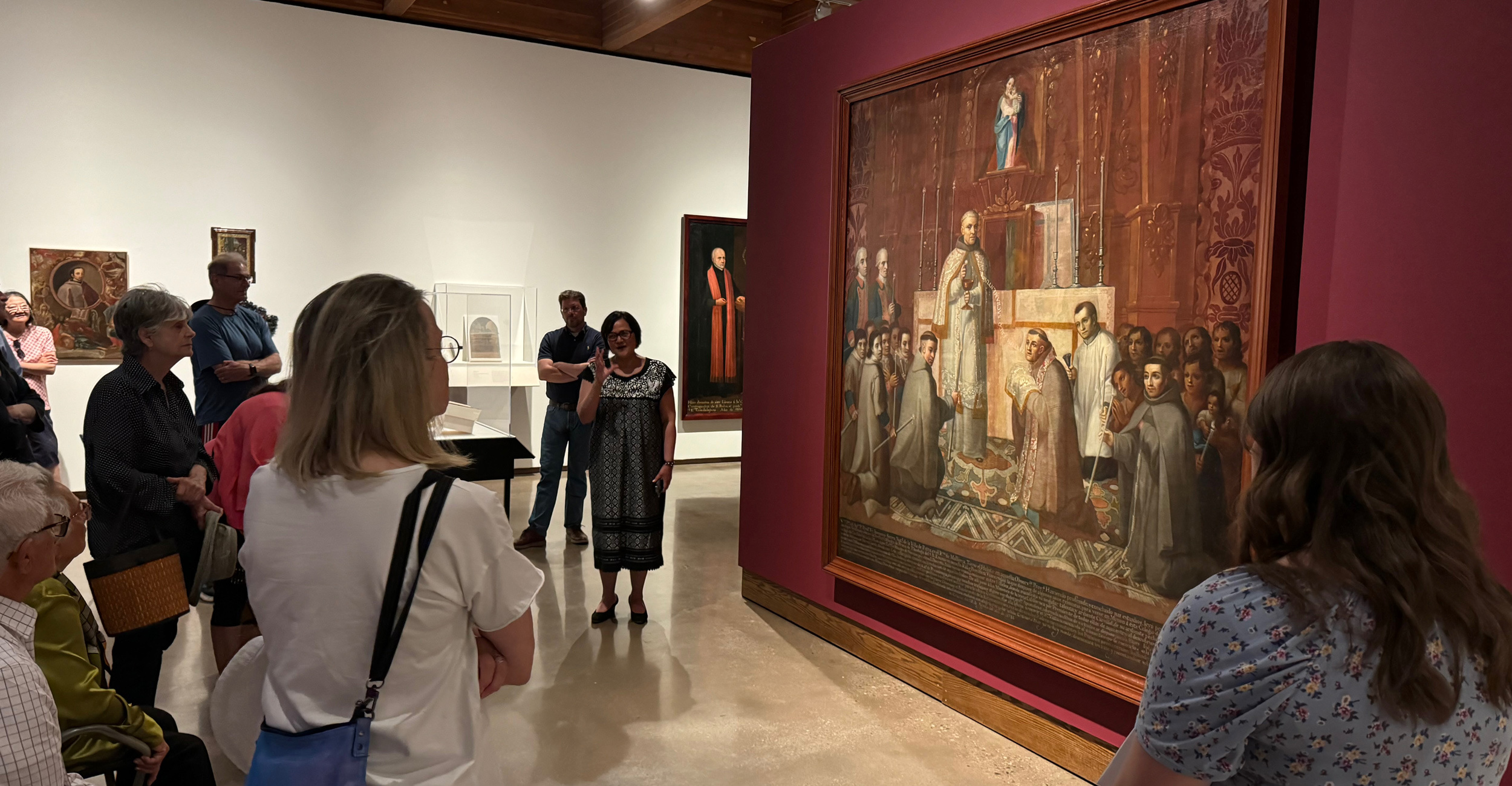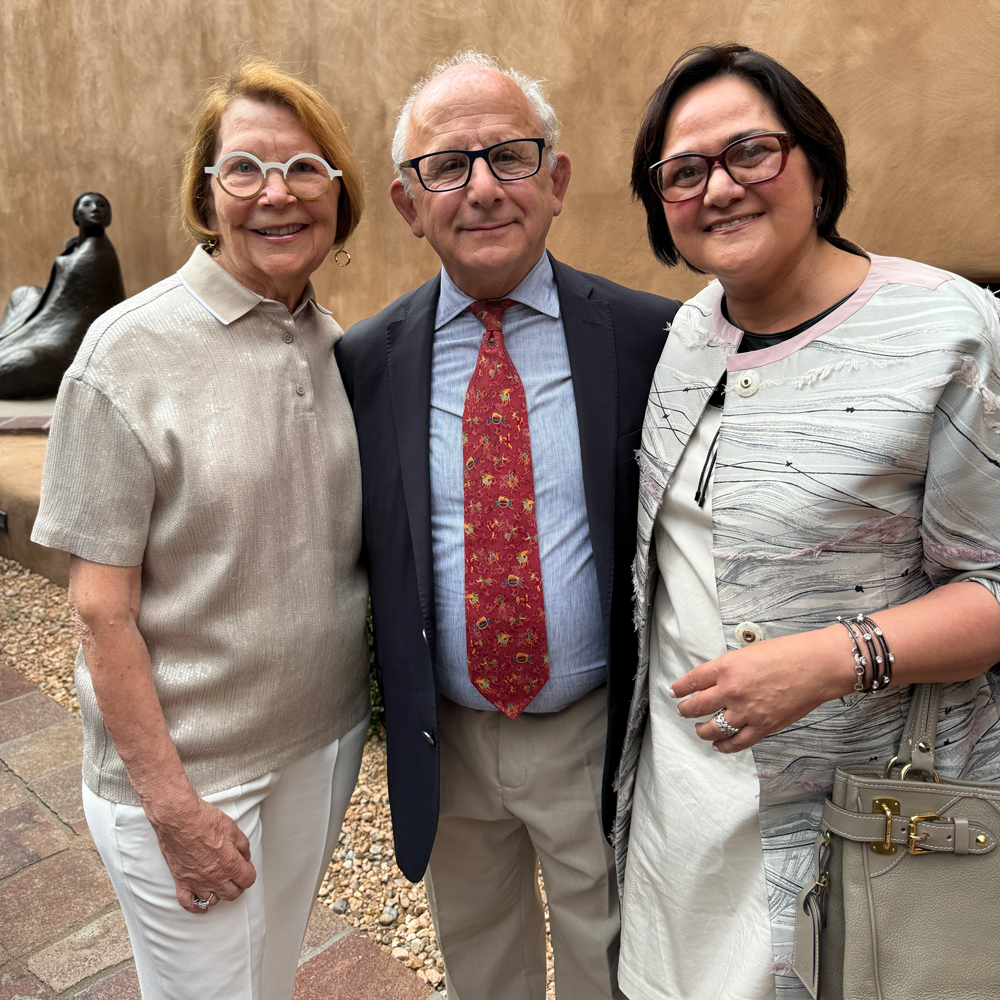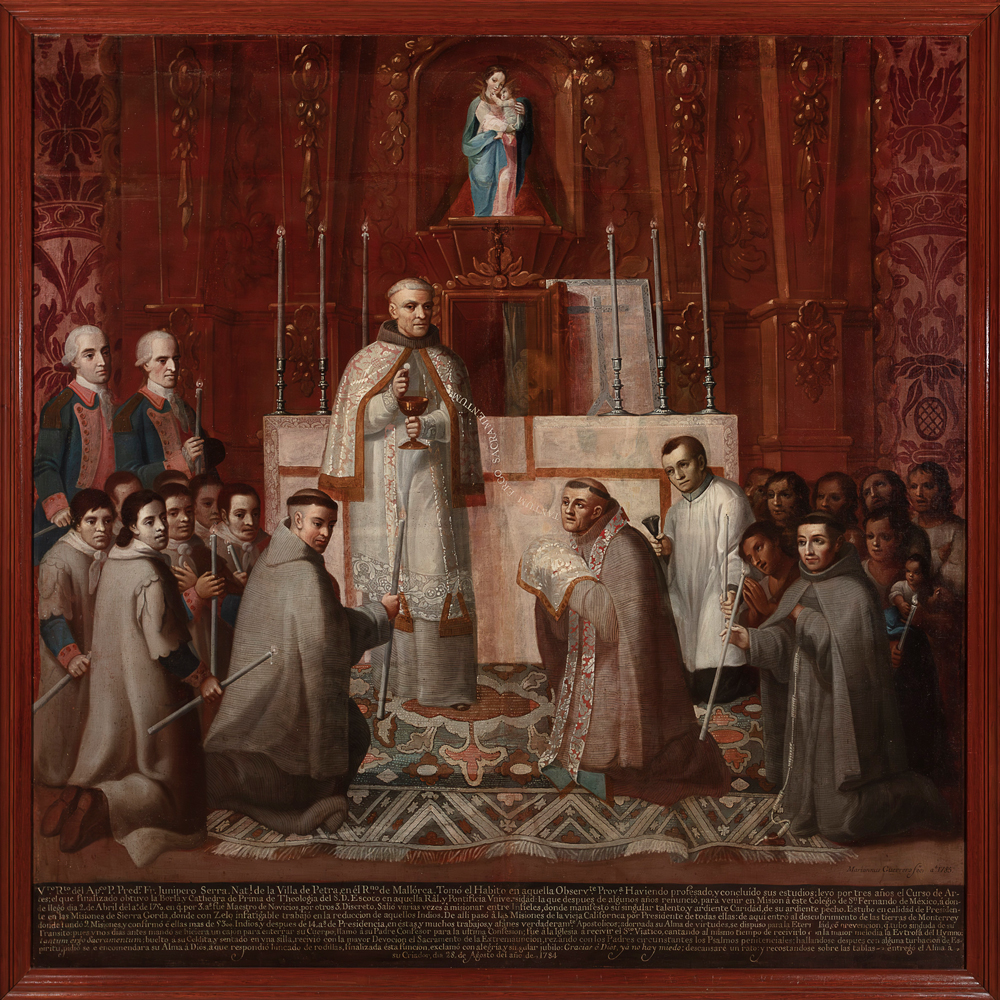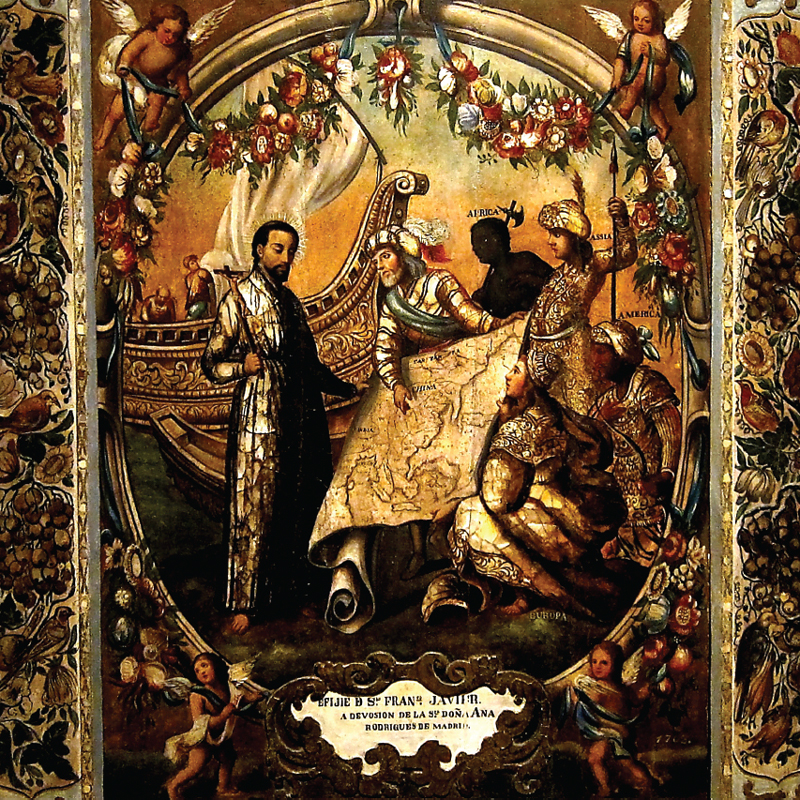
Religious Experience: OSU professor’s exhibition features centuries-old sacred art never seen in the U.S.
Friday, September 13, 2024
Media Contact: Elizabeth Gosney | CAS Marketing and Communications Manager | 405-744-7497 | egosney@okstate.edu
As the world slowed down in the early months of 2020, Oklahoma State University’s Dr. Cristina González was finding momentum in her corner of art history.
An expert in colonial Latin American art, González specializes in New Spain, which was a viceroyalty of the Spanish Empire that existed from 1521-1821 and included Mexico, Central America and the southwestern United States.
So, when González’s former OSU colleague, Dr. Mark White, approached her at the beginning of the pandemic about creating an exhibition for the New Mexico Museum of Art — of which he had just become executive director — she leaped at the chance to showcase Catholic sainthood and relevant artworks during the New Spain era.
“I thought, ‘This is a great opportunity to really emphasize not just the art tradition of this viceroyalty, but to reaffirm the importance of New Mexico specifically and remind a greater audience of our shared history,” González said. “It seemed like a daunting task initially, but we knew we had time to form a team, journey to Mexico City and other areas, develop an object list and get funding. So that's what we did.”
González’s exhibition, “Saints & Santos: Picturing the Holy in New Spain,” opened July 20 at the New Mexico Museum of Art in Santa Fe and features dozens of centuries-old artworks — many of which have never traveled outside of Mexico.
“I had no idea what the laws were governing national patrimony in Mexico,” said González, explaining that most of the exhibition’s art was borrowed from institutions overseen by the Mexican government. “We needed a team on the ground, so we had two consultants in Mexico City who were able to advance our project.”
When asked about how she was ultimately entrusted with the artworks, González stated simply that her team consists of respected professionals with years of experience.
“Our credentials are top-notch,” González said. “Aside from that, the museum also has a top-notch reputation. A show of this size approaches about half a million dollars, so with the New Mexico Museum Foundation and the state of New Mexico backing the exhibition, automatically that gets people’s attention, and they have to take you seriously.”
Among the pieces in “Saints & Santos” are paintings, sculptures, engravings and even a reliquary door found by González’s team while searching historical society collections in Texas.
“Our colleagues in Mexico had no idea that it existed,” González said. “We made some brilliant discoveries of works that were shipped to missions in Texas in the 18th century by important artists from Querétaro. That was one of our goals: to highlight works from the United States from collections that have been overlooked, to highlight that this is part of our rich, shared history.”
The exhibition also features works by Cristobal de Villalpando, a “colonial superstar of the late seventeenth century,” according to Dr. Ray Hernández-Durán, professor and associate chair of the University of New Mexico’s art department.
“In recent decades, Villalpando has become the poster child for what has variably been identified as high Mexican baroque art,” said Hernández-Durán, who was tapped by González to contribute an essay to the exhibition’s catalog. “That Cristina was able to acquire such exemplary works for her show is an achievement.
“So much of colonial art history has tended to focus on religious art. It’s rare to come across scholarship that is fresh and helps a reader acquire a new understanding of what have now become familiar or expected subjects. Cristina did just that.”



Part of what drove González to present new insights on sacred art of New Spain was other scholars’ fixation on Italy and Spain during the same time period.
After the Council of Trent in the 16th century, the Catholic council that first established a formal canonization process, countries competed to have their holy figures officially recognized by the Vatican. González explained that due to the powerful networks that linked Italy and Spain to the Vatican, it was no wonder that nearly all canonized saints from 1600-1750 came from those countries.
“If we're going to study saints, we need to expand those boundaries in order to get a more truthful view of sanctity in this period,” González said. “We need to understand who was venerated, who was thought of as a saint, who was held to be one locally, what causes were being pushed towards the Vatican, who was being lobbied for, and who was being beatified.
“Suddenly, our archive is no longer just the Congregation of Rites in the Vatican. Now, it’s also the Inquisition archive and other archives that give us a better picture of who is being hailed as a saint.”
Using this historical context, González divided her exhibition into four parts — Medieval Saints, Baroque Sanctity, ‘Blessed’ in New Spain, and Sanctity on the Border — in order to examine how art was specifically used during the period to celebrate, propagate and venerate holy figures.
"The show is multi-layered in a way that if someone knows very little about the historical context, they could still visit the exhibition and be blown away just by the artwork,” González said. “But I also wanted to bring ... the academic discourse in order to reassert the importance of these different archives and geographies; to reassert the importance of New Spain for global discussions and test the boundaries of studying sanctity.”
For Hernández-Durán and others in New Mexico, those discussions are starting at home.
“This show allows the visitor to see how ideas about the sacred or holy were imagined and visually depicted and how those pictorial languages were adopted in the northern provinces of New Spain,” Hernández-Durán said. “One can clearly see these connections but also the differences, which clearly speak to the unique circumstances of life in the region. We get a better understanding of life in New Mexico through these images."
The yearslong process to see “Saints & Santos” come to fruition was fraught with frustrations and roadblocks, but González emphasized it was worth every gray hair and even temporarily “tanking my blood pressure.”
“It was such an overwhelming experience on an organizational and intellectual level, but I felt a great amount of responsibility for these works,” González said. “I journeyed to Santa Fe in early July to be there when the crates arrived. When they were unpacked, to see that first crate opened with that first image for our title wall? I almost cried.”
That image was a portrait of St. Teresa of Avila that is usually hung high up in a church away from the light, González explained, so to see its vibrant colors up close felt akin to a religious experience.
“She has her arms open, so I felt like she was embracing me,” González said. “I felt a kind of affinity with the group of people throughout history that have seen the work that closely. I felt lucky to appreciate that work and to bring it to this wider public in the United States.”
As each artwork was unpacked, González said she felt the past connecting her to pieces of her present: a painting reflected the scholarship of a UNM colleague; a portrait reminded her of another professor’s book; the exhibition opening brought together family, colleagues and friends from around the world.
“It was one of the proudest moments I've ever had to see my husband, my son, my parents and two of my brothers at the opening,” González said. “My mother and father grew up in Mexico going to all of these museums and feeling this kind of reverence for these public, revered government collections. So, to have them meet the director of all of that and to have their daughter having brought these works to New Mexico really meant a lot to me.”
“Saints & Santos” will be on view through Jan. 12, 2025, with a symposium scheduled for October. It is supported in part by OSU alumni Carl and Marilynn Thoma through the Thoma Foundation. Learn more about the exhibition on the New Mexico Museum of Art’s website.
